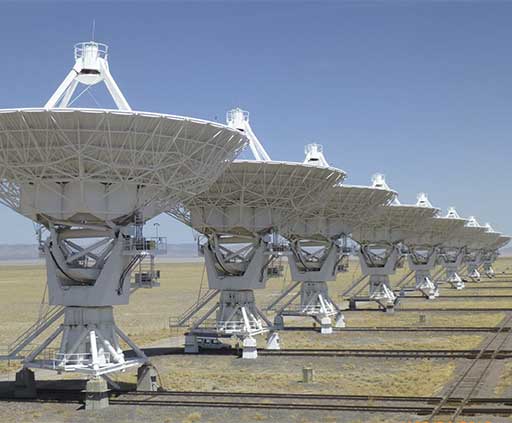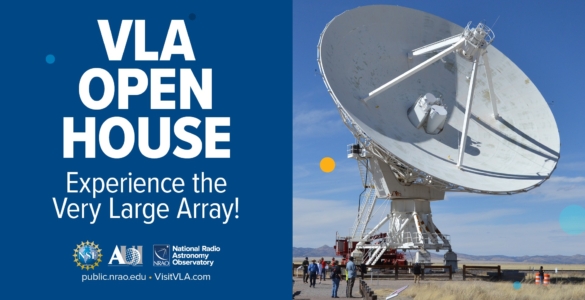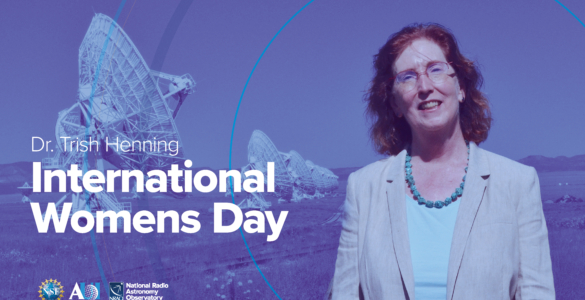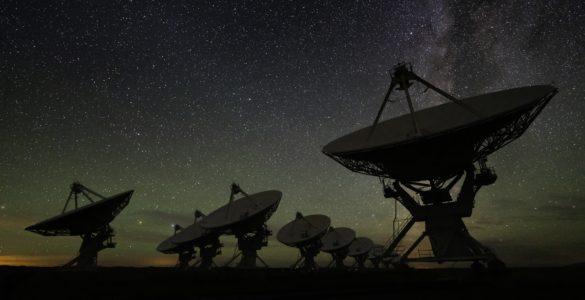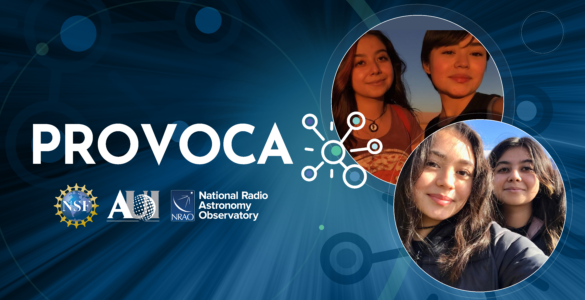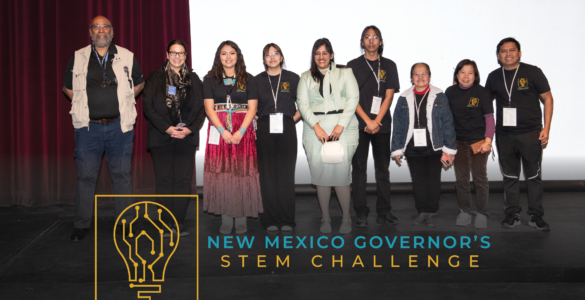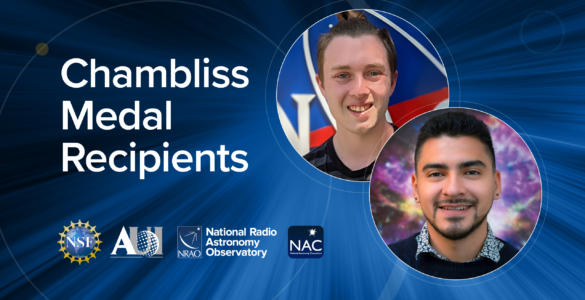Rolling up their sleeves to build and install new equipment for the National Science Foundation’s (NSF) Very Large Array (VLA) radio telescope, a team of astronomers has opened a new window on the universe, revealing tantalizing new information about the explosions of massive stars, the workings of galaxies with supermassive black holes at their centers, and clusters of galaxies.
“We’re going back to the region of wavelengths where Karl Jansky started radio astronomy in 1932,” said Namir Kassim, of the Naval Research Laboratory (NRL), in Washington, D.C. “This is one of the most poorly explored regions of the electromagnetic spectrum, yet it offers tremendous potential to learn exciting new information about everything from the Sun and planets to galaxy clusters and the universe itself,” Kassim said.
Kassim, along with Rick Perley of the National Radio Astronomy Observatory (NRAO) in Socorro, NM; William Erickson, a professor emeritus at the University of Maryland; and Joseph Lazio, also of NRL, presented results of their observations with the new VLA system at the American Astronomical Society’s meeting in Chicago.
The new system uses the 27 dish antennas of the VLA, each 25 meters (82 feet) in diameter, to receive cosmic radio emissions at a frequency of 74 MHz, or a wavelength of about four meters. This frequency, lower than that of the FM broadcast band, is far below the usual frequencies, 1- 50 GHz, used for radio astronomy. “Though the region of 15-150 MHz is where Jansky and Grote Reber did the first radio-astronomy work in the 1930s and 1940s, it has long been neglected because of technical difficulties of working in that region,” said Perley.
Still, the astronomers said, there is much to be learned by studying the universe at these wavelengths. “There are phenomena associated with the Sun and planets, with other objects in our own Milky Way Galaxy, and with other galaxies and clusters of galaxies, and potentially ancient emission from the Universe itself that we can see only by observing at these longer wavelengths,” Kassim said.
The results of their first observations with the new VLA system have proven their point. Aiming the VLA at the supernova remnant Cassiopeia A, the shell of debris from a giant stellar explosion, they found evidence for cool gas inside the shell that has not yet been shocked by the “reverse shock” that propagates backwards through the “ejecta” towards the explosion’s center
“We know how old this supernova remnant is — about 300 years — and whether or not the reverse shock would have passed through all the ejecta yet depends on the nature of the star that exploded and the characteristics of its winds and surroundings before its death,” Kassim said. “Finding unshocked gas inside this remnant, the first direct case for such material detected in the radio part of the spectrum, confirms the predictions of supernova evolution theory and thereby advances them.”
Other observations showed giant, radio-emitting “bubbles” in the galaxy M87 in the constellation Virgo. These objects, also seen with the VLA at the somewhat higher frequency of 330 MHz, raised questions about how old they were and how they were powered, as well as how they are linked to the even larger halo of X-ray emission generated around this galaxy. “The shape and extent of these huge, radio-emitting regions suggests that they are relatively young, expanding, and are being powered by particles shot out of the galaxy’s nucleus by the gravitational energy of a supermassive black hole,” said Kassim. “Comparison of the higher frequency images with our new one made at 74 MHz show exactly the correspondence we would expect if the black hole is powering these regions,” he added.
The researchers, together with astronomer Phillip Kronberg and his collaborators from the University of Toronto, also looked at the Coma Cluster of galaxies, some 450 million light-years distant. “There is a radio-emitting halo around this cluster, and our image made at 74 MHz greatly improves our knowledge of its extent and properties. This is crucial to figuring out how the halo got there in the first place,” Kassim said.
In the region of the Coma Cluster, the scientists made a “super” wide-field image. This image, showing an area some 15 degrees on a side, shows hundreds of radio-emitting objects, including extremely distant galaxies. Dubbed the “VLA Coma Deep Field,” the image is “one of the most spectacular made recently at the VLA,” Kassim said. “The amount of information obtained from only a single pointing of the VLA is awesome. Images like this will be extremely valuable in learning about the early universe,” he said.
All of these results came about because of the astronomers’ persistence in pursuing a long-sought goal of equipping the VLA to observe at the new frequency. Erickson has been a long-time proponent of low-frequency radio astronomy. Both Perley and Kassim were Ph.D students of Erickson at the University of Maryland. The 330-MHz capability, also supported by NRL, was added to the VLA in the 1980s, and the group managed to install equipment for 74 MHz on eight of the VLA’s 27 antennas a few years ago.
They still wanted all the antennas equipped, however. “We knew we could use off-the-shelf components and equip antennas for about a thousand dollars each,” said Perley, “but we just couldn’t seem to squeeze the loose change out of anyone.”
Then Kassim pursuaded the Naval Research Laboratory to provide funding for the project. The astronomers then went to work to get the most performance for the money. Erickson, aided by NRL engineer Brian Hicks and Kassim, did the actual construction of 74-MHz receivers at NRL. The astronomers also worked alongside engineers and technicians, climbing on the VLA’s giant dish antennas to install the new equipment. Hicks is presently constructing additional 74 MHz receivers at NRL for eventual tests on Very Long Baseline Array antennas
The result, Perley said, “is not bad for a do-it-yourself project.” In the first observing session using the new equipment, astronomers from four continents studied a wide range of celestial objects, and the results “were a spectacular success. We proved that you can make good images with the VLA at this frequency. The problem always was the difficulty in processing data to correct for ionospheric effects on the incoming radio waves. New computing techniques now have solved that problem.”
“We have shattered the ionospheric barrier and solved the wide- field imaging problem,” Kassim said.
The research results presented at the AAS meeting “show the great value of this new capability,” Kassim said. “In addition to our work on supernova remnants, active galaxies and galaxy clusters, other papers presented at this meeting show that this frequency range is extremely valuable for solar research,” Kassim added.
“In fact, the success of the VLA at this frequency shows that we could learn even more from this new window on the universe by building a much larger and more sensitive instrument dedicated to long-wavelength radio astronomy — the Low Frequency Array (LOFAR). An international consortium, initially involving NRL, NRAO, and the Netherlands Foundation for Radio Astronomy, currently is forming to develop LOFAR, an instrument which would see more detail and fainter objects than we can today,” Kassim said.
The VLA is an instrument of the National Radio Astronomy Observatory, a facility of the National Science Foundation, operated under cooperative agreement by Associated Universities, Inc. Basic research in radio astronomy at the Naval Research Laboratory is supported by the Office of Naval Research.
Contact:
Dave Finley, Public Information Officer
(505) 835-7302
dfinley@nrao.edu


